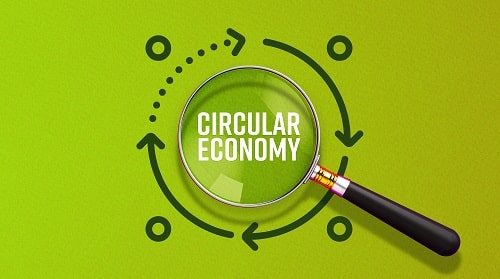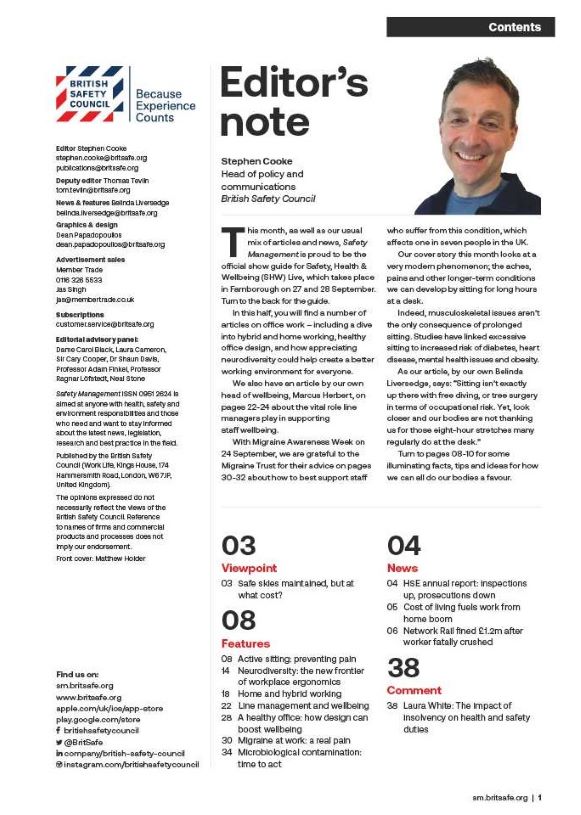There is a tremendous wealth of evidence supporting the importance of wellbeing in the workplace, and with Covid-19 continually reshaping how we work and where we work – with significant impact on employee wellbeing – we are seeing accelerated trends in workplace wellbeing.
Features
Why good data is crucial for an effective wellbeing programme
What was previously seen by some human resources and health and safety practitioners as a challenge to get board buy-in, has rapidly moved up the corporate agenda, with many senior leaders placing the health and wellbeing of their workforce at the top of their priorities.
We are also seeing a growing desire to ensure that wellbeing interventions are relevant to the organisation – which means they are informed by credible and robust data. As former chief medical officer Sally Davies cautioned against back in 2013, “well-being interventions shouldn’t be carried out without understanding the issues they seek to alleviate”.
 Data is vital to help us understand what we are trying to address in our wellbeing programmes. Photograph: iStock
Data is vital to help us understand what we are trying to address in our wellbeing programmes. Photograph: iStock
After all, leaders don’t make business decisions based on uninformed data. We know that our people are instrumental to the success of any business, so why should the decisions we make around employee wellbeing be based on anything other than informed data?
Data is also vital to help us understand what we are trying to address in our wellbeing programmes. Is this about improving work organisation and job design? Is it about promoting healthy behaviours – if so, what are we addressing? Is it about improving the identification and management of work stress? Optimising attendance management, rehabilitation and return to work? Or some or all of the above?
Data can inform the right intervention and support infrastructure for a business. And when we think about the support infrastructure, we need to include our employees, managers and our leaders because everyone – not just the helplines, the wellbeing interventions or the health-related insurance schemes – play an equally important role in a workplace wellbeing support infrastructure.
Only once an organisation has the right, robust data informing their wellbeing programme design – and has optimised the measures behind what drives that data – can it effectively monitor, review and refine its ongoing programme and align employee wellbeing to the bottom line.
If we look at each of the evidence-based approaches to addressing wellbeing and mental health at work, they can be broadly summarised into something like this – and ultimately should be driven by your data.
Getting your data right starts by having a robust approach to assessment. This means both at an organisational level: (what policies, procedures and practices are currently in place? How consistently are they applied/ adhered to? How informed and relevant are they to your business? What data is currently captured and how robust is that data?); and robustness of the measures behind what drives your data.
For example, if your absence policies and procedures are not consistently applied, this should be factored in the weighting given to the credibility of the data in informing your overall approach (of course, in this situation, optimising your attendance management should be one of your wellbeing programme design priorities!).
Secondly, from an employee perspective. How ‘well’ are your employees? How informed and robust is the data supporting this? Are you looking at single or multiple sources of data? How frequently are you looking at the data? Who is analysing the data?
Let’s also remember the legal duty of care – employee mental health and wellbeing is covered in various legislation, which if a business fails to comply with, they could face risk of a tribunal (such as disability discrimination claims, health and safety issues such as stress claims, or personal injury claims – for example, for psychological injury).
 "Wellbeing interventions shouldn’t be carried out without understanding the issues they seek to alleviate."
"Wellbeing interventions shouldn’t be carried out without understanding the issues they seek to alleviate."
Under the 1999 Management of Health and Safety at Work Regulations, employers have a duty to assess the risk of stress-related ill health arising from work activities – and under the 1974 Health and Safety at Work Act, to take measures to control that risk.
There are various ways of capturing this information – from individual one-to-one stress risk assessments, to site/ project risk assessments (can you design out work-stressors from the outset?), to group-wide employee surveys.
If you are already using employee surveys, think about how holistic and comprehensive they are. Do they identify and measure the impact of the key drivers of workplace wellbeing?
Are they sufficiently meeting the requirements of the aforementioned regulations? Are they designed to enable ease of benchmarking against existing survey question sets? Do you have methods in place to enable you to explore themes and outputs of surveys with employees and drill down into particular areas – for example, focus groups or employee representative groups?
The more information we have – but importantly, the more holistic a picture we have looking at multiple data sets – the more informed and relevant workplace wellbeing programmes become.
Stephen Haynes is head of programme at Mates in Mind
For more information see: www.matesinmind.org / www.beingwelltogether.org
FEATURES

How to build circular economy business models
By Chloe Miller, CC Consulting on 07 April 2025
Widespread adoption of a circular economy model by business would ensure greater environmental and economic value is extracted and retained from raw materials and products, while simultaneously reducing carbon emissions, protecting the environment and boosting business efficiency and reputation.

What does the first year on an accelerated net zero path have in store for UK businesses?
By Team Energy on 07 April 2025
The UK is halfway to net zero by 2050 and on a new, sped-up net zero pathway. In light of this, Graham Paul, sales, marketing & client services director at TEAM Energy, speaks to TEAM Energy’s efficiency and carbon reduction experts about the future of energy efficiency and net zero in the UK.

Aligning organisational culture with sustainability: a win, win for the environment and business
By Dr Keith Whitehead, British Safety Council on 04 April 2025
The culture of an organisation is crucial in determining how successfully it implements, integrates and achieves its sustainability and environmental goals and practices. However, there are a number of simple ways of ensuring a positive organisational culture where everyone is fully committed to achieving excellent sustainability performance.



